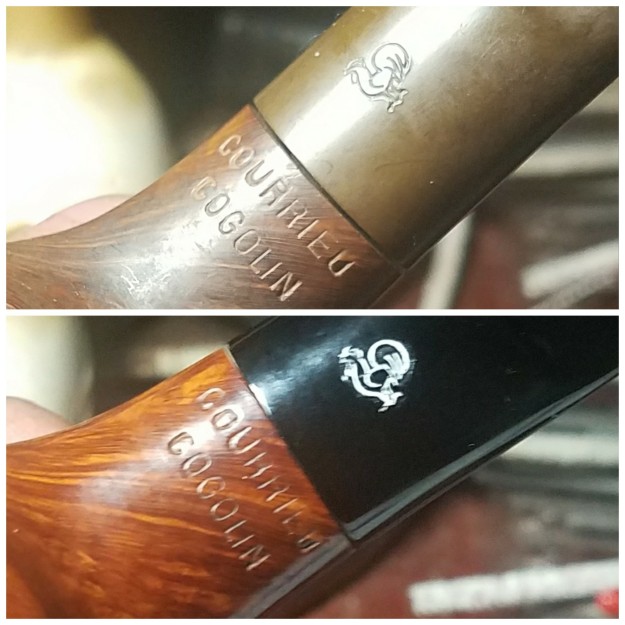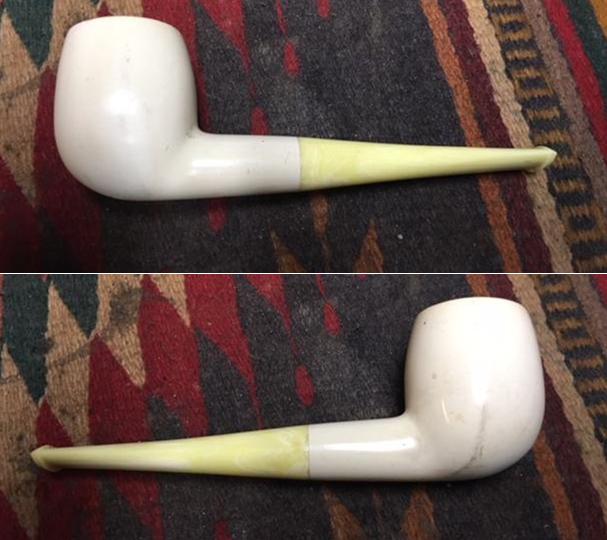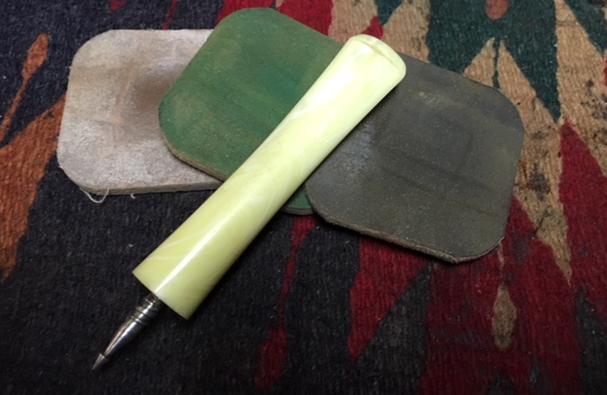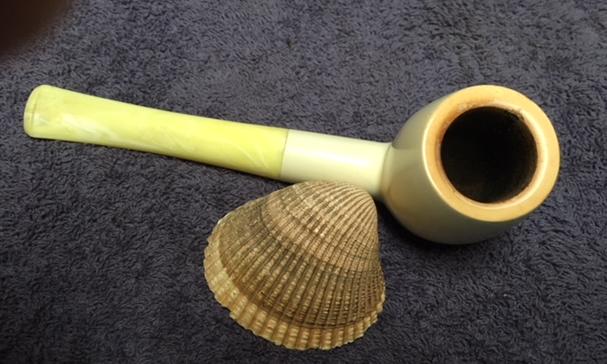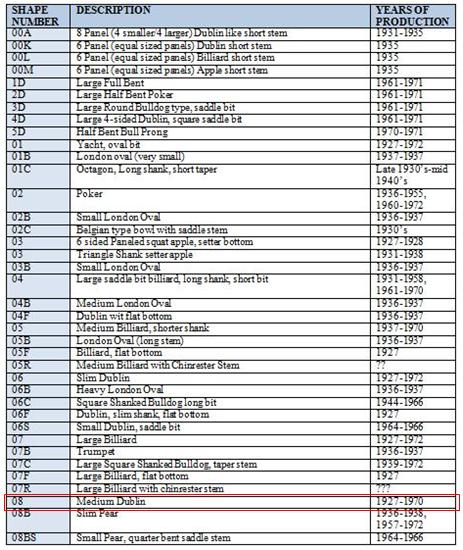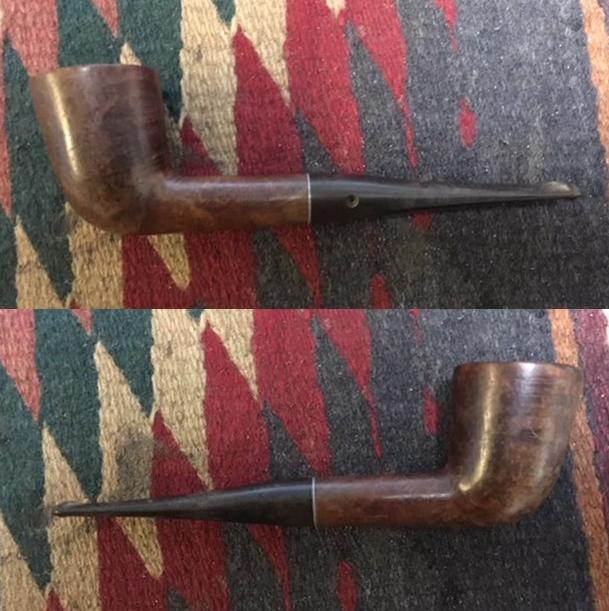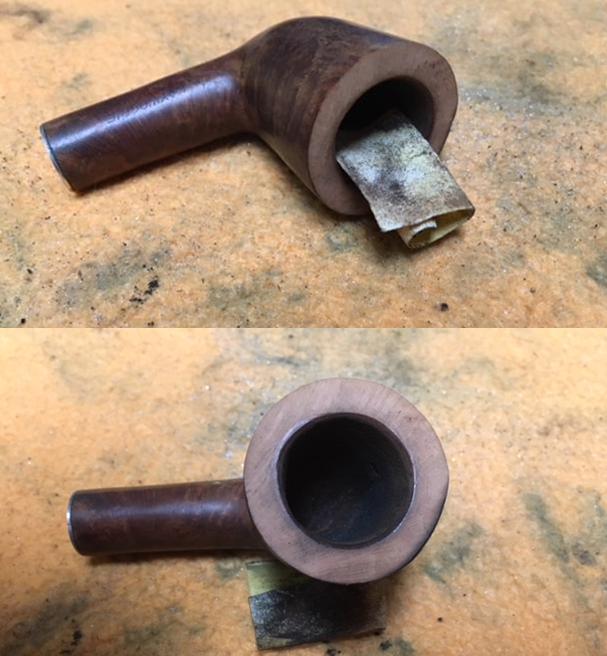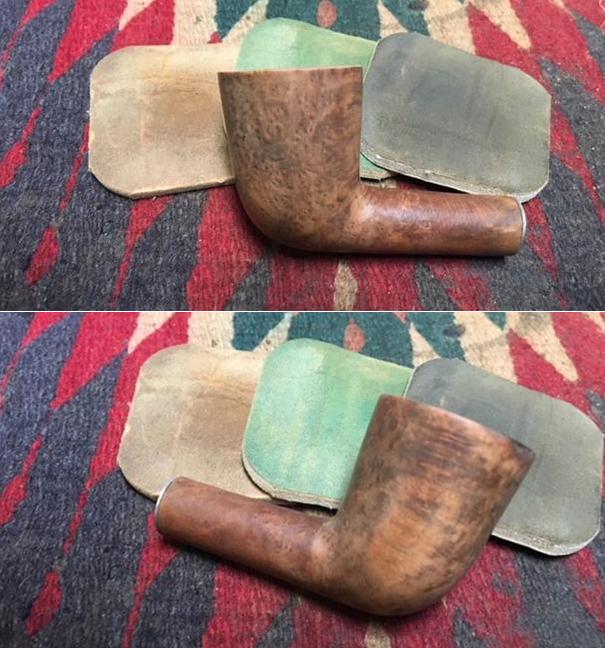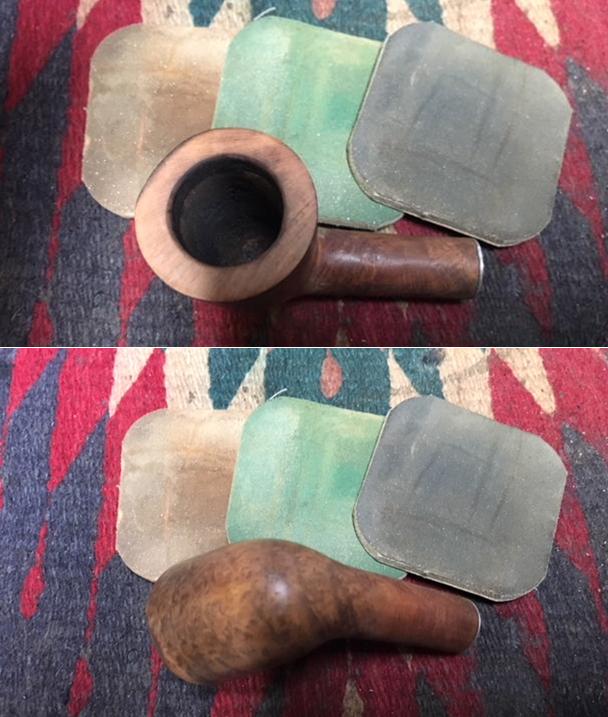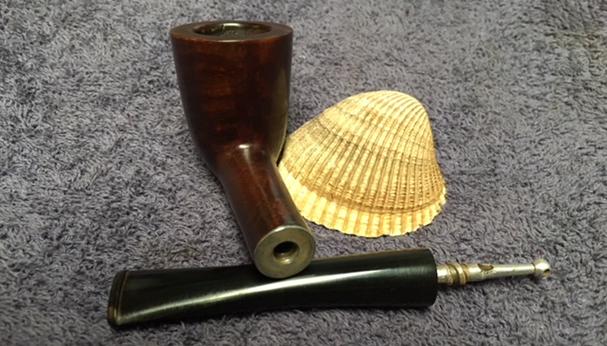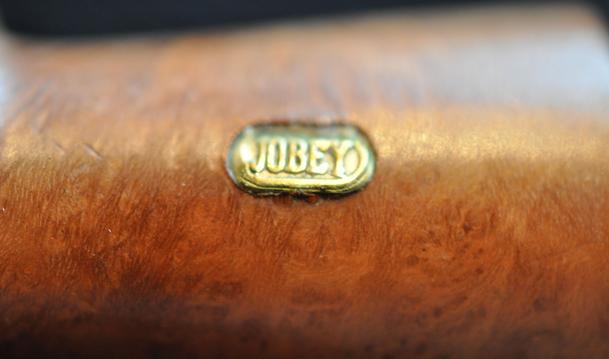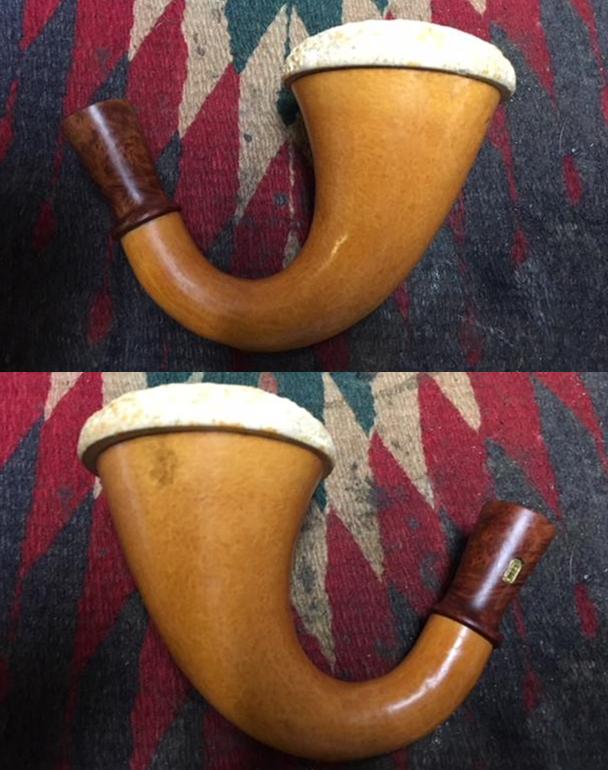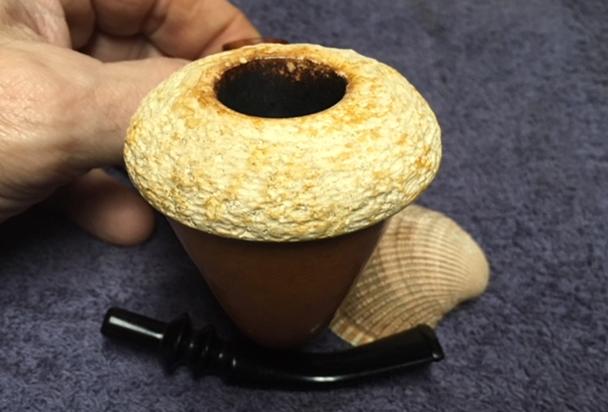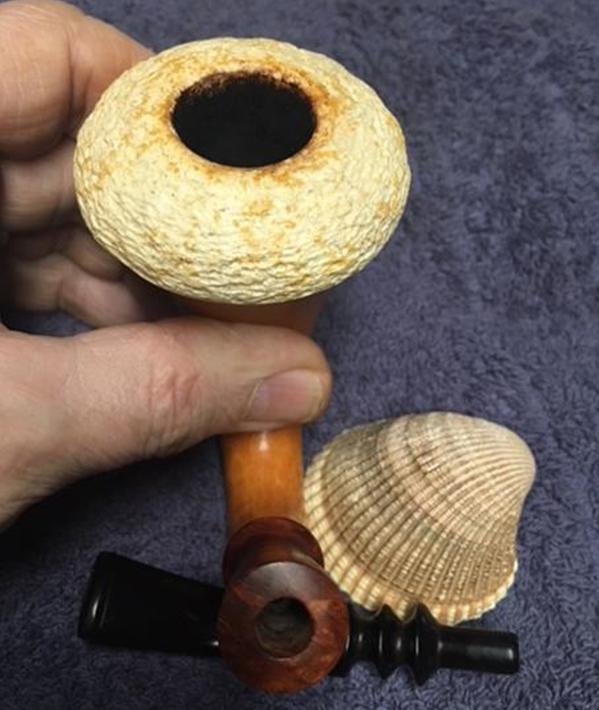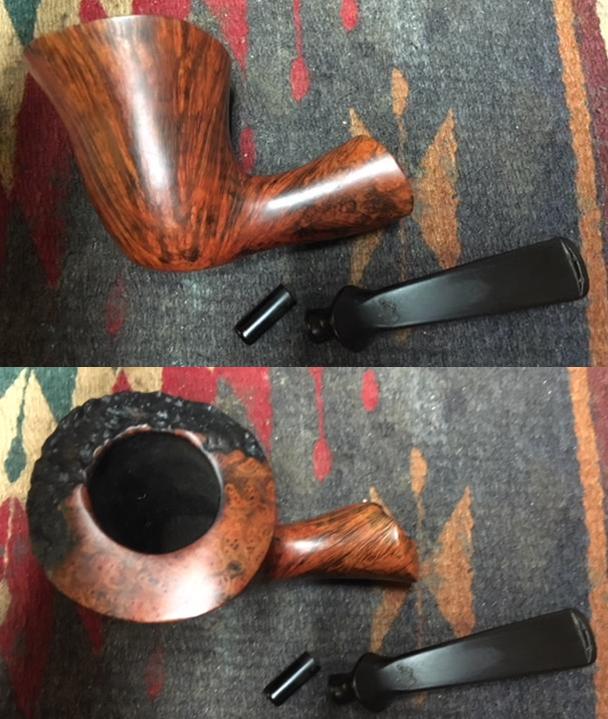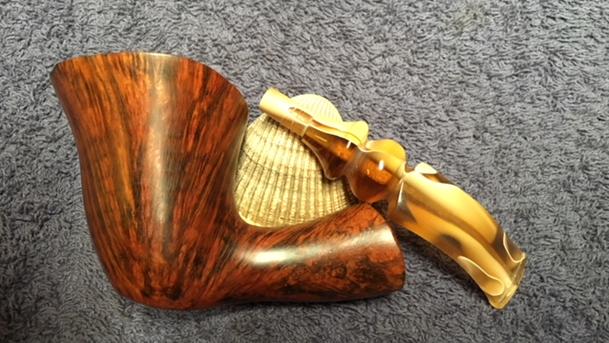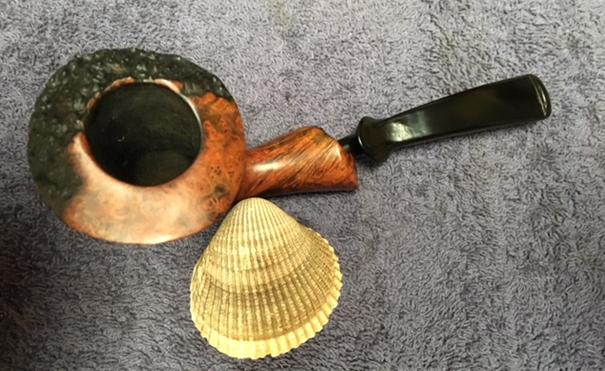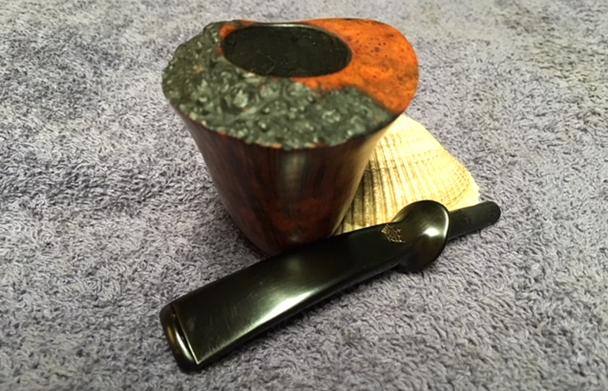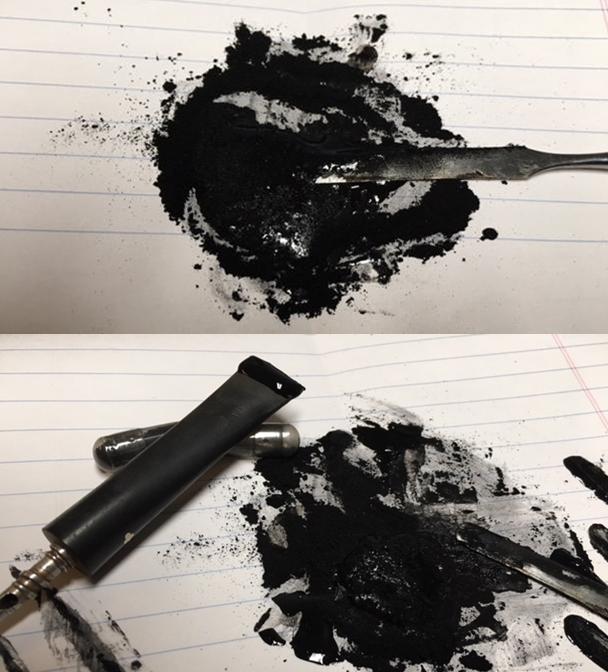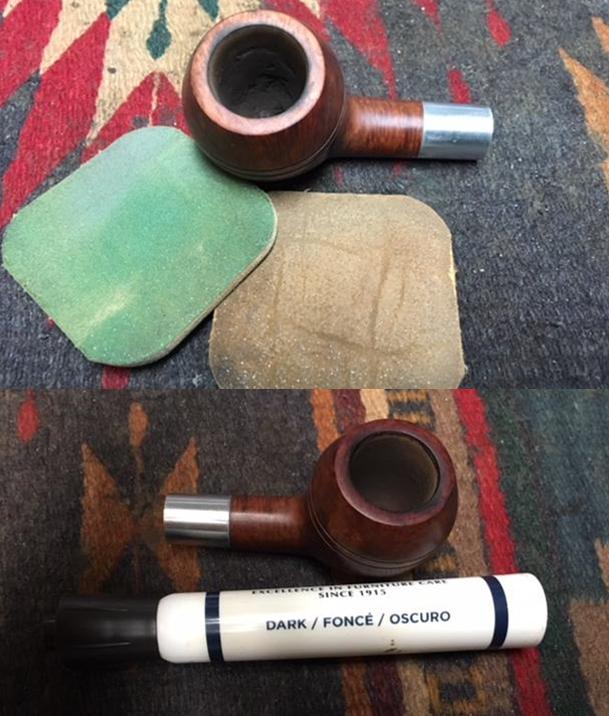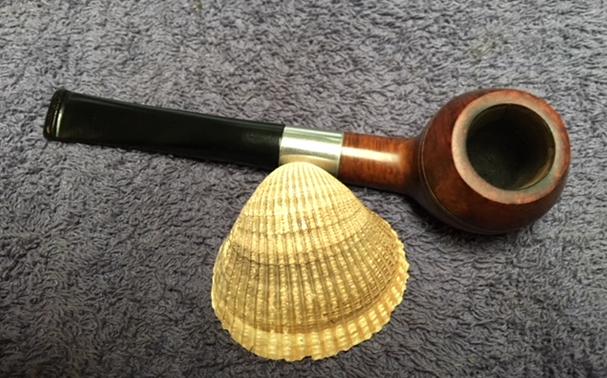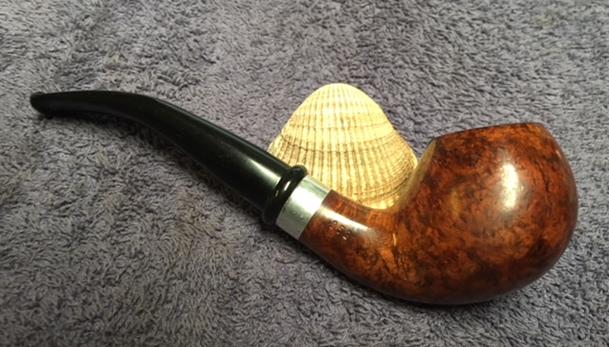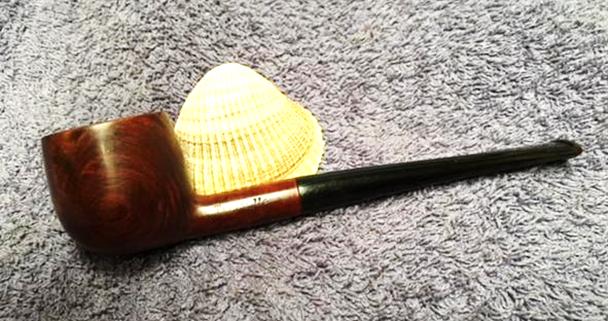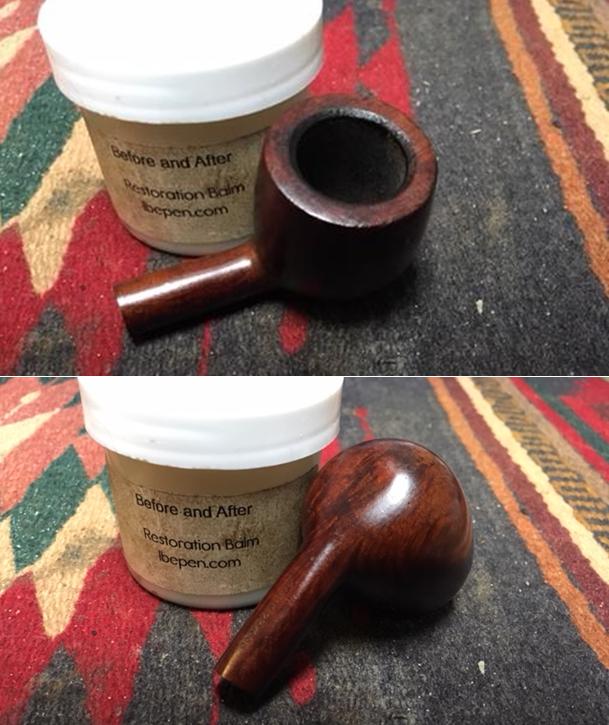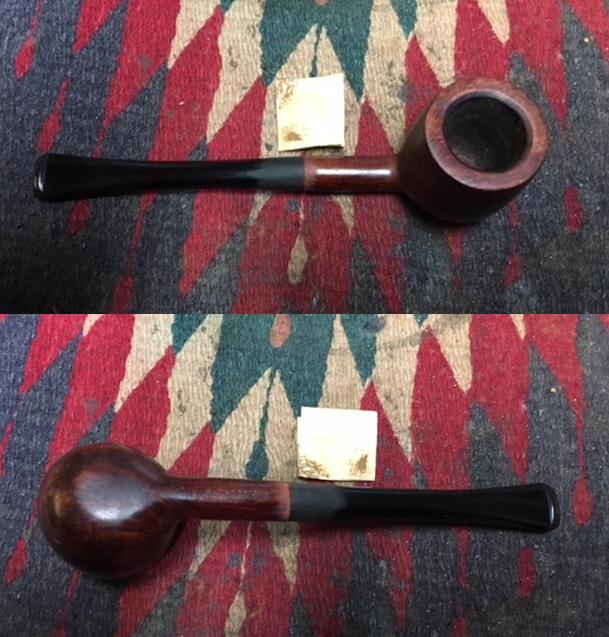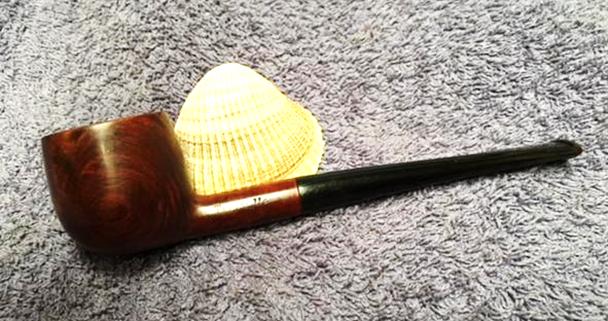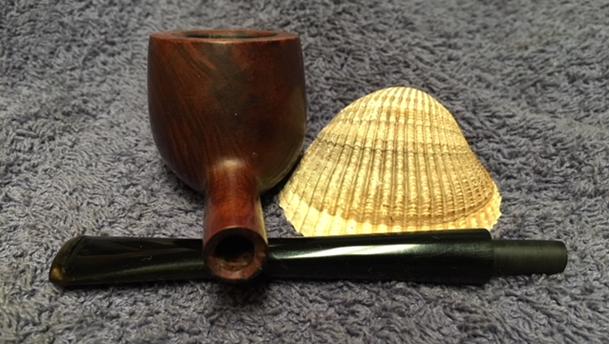Blog by Steve Laug
Today I found myself in Bellingham, Washington once again for a lunch meeting for work. Whenever I have to go to Bellingham I try to head down a bit early to stop by and visit my favourite pipe shop in town. The owner had become a friend. His name was Mike and he was the owner and operator of both the Senate Tobacconist and Smoke Shop on Holly Street and the Fairhaven Smoke Shop in old Fairhaven. My friend and I parked up the street from where the Senate shop was and walked down the street to the shop. I was utterly dumbfounded that the building was empty and the Mike and Senate Smoke Shop were gone. The last time I visited he had spoken of how hard it was in the anti-smoking environment of Washington to keep his business going and that he was going to close up shop. He spoke of closing down within a year as he was tired of the hassle. But with my traveling I had not been back for a visit for about 7-8 months. I missed the closing. Today was a sad day – generally I make it a habit every time I head south from Vancouver to pay Mike a visit. I stood there wondering what had happened to Mike and his stock of pipes and tobacco he had. I wonder how he is doing. I am going to have to see what I can find out.
 I googled pipe shops in Bellingham and there was one that came up that was not too far away from the old Senate location. In fact the app said it was a 7 minute drive. It said the shop did not open until 11am so we stopped by a coffee shop and relaxed while we waited for the shop to open. While we sat there I read some of the online reviews of the shop and looked through the photos. The shop was called Sir Winston Pipes & Cigars. The photos showed some bulk tobacco. As we got closer to 11 o’clock we headed over to the shop. It was located at 2122 James St. in Bellingham, WA. It was an interesting neighbourhood – residential dwellings surrounded by light industrial buildings. It was on a busy four lane street. We found the address and a parking place in front of the house. The sign in the front yard caught my attention. It was bright red sign that read Sir Winston Pipes & Cigars. It hung by its right side from what looked like a silver cigar tube with the SW (Sir Winston) label on the tube. There was a large Peterson’s style system pipe hanging below the sign – dark brown bowl, silver ferrule and a black stem.
I googled pipe shops in Bellingham and there was one that came up that was not too far away from the old Senate location. In fact the app said it was a 7 minute drive. It said the shop did not open until 11am so we stopped by a coffee shop and relaxed while we waited for the shop to open. While we sat there I read some of the online reviews of the shop and looked through the photos. The shop was called Sir Winston Pipes & Cigars. The photos showed some bulk tobacco. As we got closer to 11 o’clock we headed over to the shop. It was located at 2122 James St. in Bellingham, WA. It was an interesting neighbourhood – residential dwellings surrounded by light industrial buildings. It was on a busy four lane street. We found the address and a parking place in front of the house. The sign in the front yard caught my attention. It was bright red sign that read Sir Winston Pipes & Cigars. It hung by its right side from what looked like a silver cigar tube with the SW (Sir Winston) label on the tube. There was a large Peterson’s style system pipe hanging below the sign – dark brown bowl, silver ferrule and a black stem.
 The shop itself was a small house with a large front porch. It was nicely laid out and had a well laid out yard with sidewalk leading to the front door. There was a parking lot behind the shop and a rear entrance that also lead into the shop. We arrived a little before 11 and the shop keeper was opening the front door and turning on the “Open” sign in the front window on the right as you came up the sidewalk. I turned the handle on the door and open it inward. The sales counter was to my left as I came in the door. I asked the shop keep if the shop was open and she said, “Just about… but come on in”. My friend and I came in the shop and had a look around.
The shop itself was a small house with a large front porch. It was nicely laid out and had a well laid out yard with sidewalk leading to the front door. There was a parking lot behind the shop and a rear entrance that also lead into the shop. We arrived a little before 11 and the shop keeper was opening the front door and turning on the “Open” sign in the front window on the right as you came up the sidewalk. I turned the handle on the door and open it inward. The sales counter was to my left as I came in the door. I asked the shop keep if the shop was open and she said, “Just about… but come on in”. My friend and I came in the shop and had a look around.
 What had started as a very sad day – with finding out that the Senate Shop had closed – had just changed a bit. I was surprised at what I saw. The inside of this shop was a real old fashioned tobacco shop. There were no glass pipes, bongs and the like on the counters or walls. There were no fruit flavoured cigars on the counter and not a lot of drug store tobaccos. Those were my first impressions as I opened the door to the shop. It looked and smelled like a tobacco shop. I could almost imagine the days, not that long ago when you could walk into a shop like this and see old timers sitting in the back of the shop around the fireplace, under the television set enjoying a pipe or cigar. Sitting and chatting with each other wreathed in tobacco smoke and chatting and laughing. There would have been a coffee pot going and maybe a refrigerator with some drinks. None of those were there now but the space was there and the memory was still present in my mind as I looked things over. I think I had found my replacement for the Senate Shop and walking into this place reminded me of a small shop where I used to shop in Vista, California when I lived there.
What had started as a very sad day – with finding out that the Senate Shop had closed – had just changed a bit. I was surprised at what I saw. The inside of this shop was a real old fashioned tobacco shop. There were no glass pipes, bongs and the like on the counters or walls. There were no fruit flavoured cigars on the counter and not a lot of drug store tobaccos. Those were my first impressions as I opened the door to the shop. It looked and smelled like a tobacco shop. I could almost imagine the days, not that long ago when you could walk into a shop like this and see old timers sitting in the back of the shop around the fireplace, under the television set enjoying a pipe or cigar. Sitting and chatting with each other wreathed in tobacco smoke and chatting and laughing. There would have been a coffee pot going and maybe a refrigerator with some drinks. None of those were there now but the space was there and the memory was still present in my mind as I looked things over. I think I had found my replacement for the Senate Shop and walking into this place reminded me of a small shop where I used to shop in Vista, California when I lived there.
 On my right as I entered the shop there was a half wall lined with jars of bulk tobacco. They bore names like Scottish Blend, The Queen’s Choice, Peach, Pearl, Canterbury, Tradewinds, Shippers blend and others. There was a scale on the counter behind the jars. On the walls behind the jars were several humidors. One had a few tins of tobacco – Dunhill, Petersons, Escudo, Ashtons and some others. The shop keeper said she had ordered more as she had sold many over the Christmas season. On the shelves above the tins were some pouches and bags of tobacco along with some large cans of Sail, Mixture 79 and Captain Black. The humidor next to the pipe tobaccos held some packaged cigars and cigarillos. There were cigar cutters, cigar lighters and punches. Next to the second humidor was a window and on the other side were display shelves that had pipe pouches, tobacco pouches, polishes for stems and briar. There were also lighters, polishing cloths, Medico paper filters, Savinelli Balsa filters and other pipe accessories.
On my right as I entered the shop there was a half wall lined with jars of bulk tobacco. They bore names like Scottish Blend, The Queen’s Choice, Peach, Pearl, Canterbury, Tradewinds, Shippers blend and others. There was a scale on the counter behind the jars. On the walls behind the jars were several humidors. One had a few tins of tobacco – Dunhill, Petersons, Escudo, Ashtons and some others. The shop keeper said she had ordered more as she had sold many over the Christmas season. On the shelves above the tins were some pouches and bags of tobacco along with some large cans of Sail, Mixture 79 and Captain Black. The humidor next to the pipe tobaccos held some packaged cigars and cigarillos. There were cigar cutters, cigar lighters and punches. Next to the second humidor was a window and on the other side were display shelves that had pipe pouches, tobacco pouches, polishes for stems and briar. There were also lighters, polishing cloths, Medico paper filters, Savinelli Balsa filters and other pipe accessories.
Continuing down the hallway was a nice cedar lined walk in humidor, softly lit with sliding glass doors on my right. On the three walls around the inside of the humidor there were shelves lined with cedar boxes of cigars – there was a large variety of brands that I recognized. I think that there was something for everyone there if you are a cigar smoker. Personally I am more interested in pipes and pipe tobaccos than cigars so I did not open the humidor and walk in. I just stood at the door looking through and seeing the variety. The floor of the humidor was lined with red clay bricks. I think that I must have looked like that proverbial kid in a candy shop that always comes with me when I visit pipe and tobacco shops.
I continued down the hallway from the walk in humidor and came to the end of the road. Through the arch at the end of the hallway there was a door that went out to the back parking lot. There were washrooms (or what they call a rest rooms in the US) on either side of the doorway. On the walls were framed and unframed cigar and pipe smoking advertisements. I turned around and made my way back toward the front of the shop. There was a waist high shelving unit on the left. On top of the unit there were a variety of well finished Cherry, Walnut and Oak wood desktop humidors. These were in different sizes and shapes and were designed to hold different quantities of cigars. Each humidor had the humidity meters and humidifying pouches inside. They were some beautiful pieces. There were also smaller, decorative humidors that were made to hold a smaller quantities of cigars. Behind the shelving unit were some folding panels that screened off another room behind them. In that area there was a fireplace, television and a few chairs that I think must have originally been the smoking area of the shop when the state laws allowed that privilege. I stood there for a few minutes thinking about what that must have been like when the room was filled with pipe and cigar men enjoying their favourite smokes with a television in the background while the chatted and talked tobacco, politics, children and all the things regarding families, wives and children. Those gatherings were living communities where young men were introduced to art of pipe and cigar smoking and learned lessons that are no longer taught in the halls of these old shops that are becoming fewer and fewer as the years go by and the laws become more anti-tobacco and smoking.
Walking further up the hallway toward the front of the shop, across from the walk in humidor was a series of shelves set in the wall. The walls inside the shelves matched the red colour of the rest of the walls in the shop. The shelves displayed pocket cigar holders, ash trays with and without cork pipe knockers, lighter, pipe rests, pocket flasks, tobacco trays and ceramic pipe tobacco humidors in a variety of shapes and sizes. The display was nicely laid out and looked good together. I proceeded down the hallway and turned toward my right. There was a small display case there that held a large selection of zippo lighters with and without pipe inserts. To the left of that was a display counter that had bulk pipe cleaners in fluffy, regular and bristle formats. Inside the case were various pipe tampers, reamers and tools that gave a wide range of options for the pipe smoker. Behind the counter was another folding screen blocking off what used to be the smoking lounge. The shop keeper’s dog was lying down behind the screen and barked her greetings. To the left behind the counter on the wall was a shelf with a large selection of packaged cigarette tobaccos and rolling papers. The rosy hue to the pictures of the counter area was caused by a red, neon Sir Winston sign hanging on the wall behind the counter. The walls in the rear of the shop were a bright red and as you came into the front they were more of a cream colour. It is a cozy shop that makes you feel comfortable.
I proceeded down the hallway and turned toward my right. There was a small display case there that held a large selection of zippo lighters with and without pipe inserts. To the left of that was a display counter that had bulk pipe cleaners in fluffy, regular and bristle formats. Inside the case were various pipe tampers, reamers and tools that gave a wide range of options for the pipe smoker. Behind the counter was another folding screen blocking off what used to be the smoking lounge. The shop keeper’s dog was lying down behind the screen and barked her greetings. To the left behind the counter on the wall was a shelf with a large selection of packaged cigarette tobaccos and rolling papers. The rosy hue to the pictures of the counter area was caused by a red, neon Sir Winston sign hanging on the wall behind the counter. The walls in the rear of the shop were a bright red and as you came into the front they were more of a cream colour. It is a cozy shop that makes you feel comfortable.
In the counter on that side of the room is where there was a large display of pipes for sale. The pipes can be seen in the next series of photos of the counter area next to the door. There were many different Italian made mid ranged priced pipes. There were what looked like Savinellis and possibly Mario Grande pipes. There was also some Italian made Stanwell pipes. I did not see any Peterson pipes or even higher end English pipes such as Dunhill or even lower end Cadogan made pipes that are often in the shops. The pipes were beautifully laid out for the buyer to see.
 Next to the door and over the door were some more pipes. The ones over the door were a large variety of corn cob pipes in different shapes and sizes. It was a great display of Missouri Meerschaum pipes. The prices for the cobs was what I have come to expect. Below that and to the right of the door was a large basket of “basket” pipes. There were all shapes and sizes in the basket and also various finishes. There were some nicer pipes and some that were obviously cheaper and not as nice. There were rusticated and smooth pipes all having a shiny coat of varnish on the bowl. The stems were all rubber and there were both filter and non-filter pipes.
Next to the door and over the door were some more pipes. The ones over the door were a large variety of corn cob pipes in different shapes and sizes. It was a great display of Missouri Meerschaum pipes. The prices for the cobs was what I have come to expect. Below that and to the right of the door was a large basket of “basket” pipes. There were all shapes and sizes in the basket and also various finishes. There were some nicer pipes and some that were obviously cheaper and not as nice. There were rusticated and smooth pipes all having a shiny coat of varnish on the bowl. The stems were all rubber and there were both filter and non-filter pipes.
On the wall behind the counter and under the neon Sir Winston sign was the select of tailor made cigarettes from around the world. There was also a large Watney’s Ale mirror on the wall that added a nice touch and gave the proprietress a good view of the shop when she was at here counter.
After my ramble through the shop I took time to talk with the shop keeper. She turned out to be the owner. She had run this shop for 30 years and knew her stuff. Turned out she was a pipe smoker so we talked about the various blends that she had and the ones that were on order and had not come in to fill in her inventory after the Christmas season. Her name was Robbie and she really knew her stuff. We talked about the changes in the laws and the impact that had on her shop. She talked about the changes in the tobacco that was available for her to order. She remembered the days when her walls were lined with English and European tobaccos as well as a wide range of American ones. Those days she said had passed and it was hard to get any variety.
I decided to pick up some pipe cleaners so I put them on the front counter. My friend and I wanted to purchase some of her bulk tobaccos so she went over to the shelf and had Robbie weigh out some for us. I picked a couple of ounces of her Scottish Blend and my friend got some of that and some of the Queen’s Blend. She bagged our tobaccos and carried them over to the counter. My friend picked up a pipe pouch made by Comoy’s that would hold his pipe, tobacco, tampers and lighter. While we were looking several other customers who were obviously old friends came into the shop and purchased tobacco and other items from her. It was good to see that the place was still a living and working shop with a following that was known and made to feel at home.
My friend and I had a great visit and I asked Robbie about various tobaccos that she did not have. She felt that the next shipment would arrive soon and there would be a lot of options on her shelf. I knew then that another trip would happen sooner rather than later. I paid for my tobacco and bundles of pipe cleaners and my friend paid for his new pouch, two tobaccos and pipe cleaners.
I have to say to you that if you find yourself in the Bellingham area, I would heartily recommend that you stop by the shop and have a visit. The shop is called Sir Winston Pipes & Cigars and is located at 2122 James St. in Bellingham, WA. The phone number is 360-734-1433. The shop has a great selection of pipes and cigars as well as house blends and tinned tobacco to purchase. The proprietor Robbie is a great lady – personable, knowledgeable and genuinely interested in serving the pipe and cigar smoking public. Stop by and say hi. In this anti-smoking state of Washington in the anti-smoking climate of our world it was great to see a tobacco shop that has kept its doors open to serve the smoking clientele. Tell her you read about her on rebornpipes. Who knows we may run into each other at the shop. Until then enjoy your pipe!

